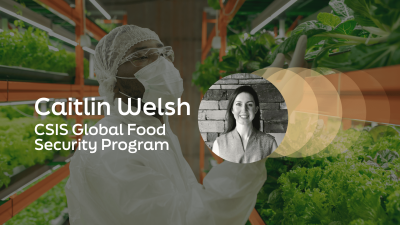
Improving access to redress for workers vulnerable to violence and harassment in South Asia
Experts discuss the factors that make some workers more vulnerable than others to violence and harassment.
This page is approximately a 3 minute read
This page was published on

During the Covid pandemic, awareness of the relationship of food and public health is on the rise. The transmission point of SARS-CoV-2 from animals to humans was likely a traditional Chinese food market, where wild animals and their meat were sold to consumers.
The danger that unsafe food – via unregulated markets – poses to human health should receive greater attention by policymakers, as Robert Paarlberg asserts here. Likewise, I believe policymakers should devote greater attention to a less-reported challenge: the danger of unsafe foods to human nutrition.
Sickness and death from diarrheal diseases – often from contaminated food and water – is a leading cause of malnutrition in children, according to the World Health Organization, with nearly 1.7 billion cases of sickness and 500,000 deaths reported each year. Diarrhea can be a cause and an effect of malnutrition, with diarrhea preventing nutrient uptake and malnutrition increasing the frequency of illness. Improving the safety of food is one important solution.
Beyond this pernicious and well-reported connection, the safety of food is important to human nutrition for another reason: because food safety is necessary for international trade, and international trade promotes consumption of diverse, healthy foods. Food safety protocols, as codified in sanitary and phytosanitary standards (SPS), are necessary to ensure the safety of food traded and consumed across borders. SPS are often misused as non-tariff barriers, a perennial challenge for the World Trade Organization. Nonetheless, meeting food safety requirements is necessary for cross-border food trade, and trade can increase the diversity of national diets, according to the Food and Agriculture Organization of the UN (FAO), by increasing the availability of diverse foods. As the FAO explains, “Eating a larger variety of foods tends to increase the chances that a person will consume adequate amounts of different nutrients necessary for their overall health and well-being.”
Food safety is also vital for nutrition because many of the foods at highest risk of contamination are the most nutritious, like fruits and vegetables, fish, meats, and dairy products. These foods are also among the most expensive. Today, over 3 billion people worldwide cannot afford the cheapest healthy diet – $3.75 per person per day in international dollars – according to the 2020 State of Food Security and Nutrition in the World report. And as expert Anna Herforth lays out here, the most expensive component of the $3.75-per-day diet is fruits and vegetables. Making these foods more plentiful and affordable, and making them safe for human consumption, require the same things: improved pest and disease management, cold chains, and market linkages.
The global food security community is slowly awaking to the importance of food safety to nutrition. Dr. Lawrence Haddad, Executive Director of the Global Alliance for Improved Nutrition, the standard-setter for global nutrition advocacy and programming, has admitted, “I recently noticed how little I knew about the food safety world, despite the fact that food cannot be nutritious if it is unsafe” – and I echo his sentiment. The World Risk Poll is an important step, providing cross-country evidence of the prevalence of harm from contaminated food. In its results, Lloyd’s Register Foundation (LRF) astutely couples data on food safety with data on water safety, recognizing the many connections between the two, as Sera Young explains here.
Building on the results of the World Risk Poll, further investment is needed to understand the nature of food safety hazards and effective interventions, particularly in low- and middle-income countries, where they pose the most serious challenges to human nutrition. Based on such data, as Dr. Hadad and Caroline Smith DeWaal explain here, governments can design policies and programs to make food safer – and improve nutrition outcomes for the most vulnerable.